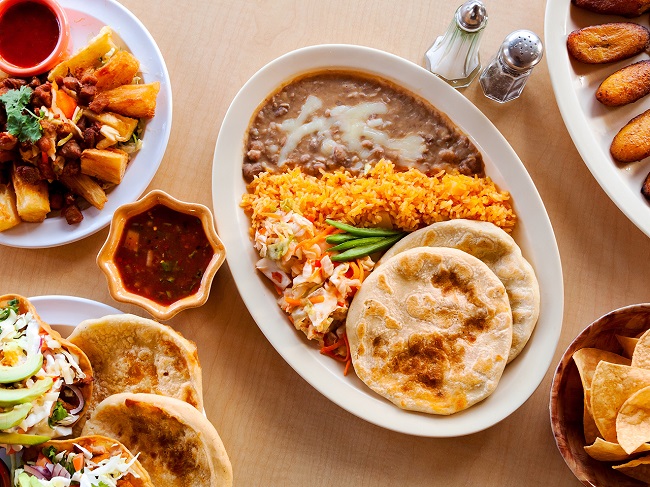Welcome to the definitive guide on how to eat pupusas, the beloved Salvadoran dish that has won hearts across the globe. This humble yet delectable dish is more than just food; it’s a cultural symbol and a comfort meal for many.
Whether you’re a newbie who has never tried pupusas or a seasoned fan looking to elevate your experience, this guide is for you.

What Are Pupusas?
Before diving into the details of eating pupusas, let’s get familiar with what they are. Pupusas are a traditional Salvadoran dish made of a thick, cornmeal flatbread filled with a variety of ingredients like cheese, beans, or meat. The exterior is crispy, and the inside is soft, packed with flavorful fillings.
The Origin of Pupusas
Pupusas have been around for centuries, tracing back to the native Pipil tribes of El Salvador. They are not just a dish but a cultural heritage that speaks volumes about the history and traditions of the Salvadoran people.
The recipe has been passed down through generations and is now a staple in Salvadoran households and restaurants worldwide.
How To Properly Eat Pupusas
Get ready to discover the world of pupusas, how to eat them like a pro, and the customs that come with this delightful staple.
Using Your Hands
The authentic way to enjoy pupusas is with your hands. Yes, you read that right. Forget the utensils; eating a pupusa is a hands-on experience. It makes the process not just about the taste but also about feeling the texture and warmth of the dish.
Accompanying It With Curtido
Pupusas are traditionally served with curtido, a spicy cabbage slaw, and a tomato-based salsa. Place a bit of curtido on top of your pupusa and a dash of salsa before taking a bite. The combination of flavors is what makes the experience genuinely Salvadoran.
Eating In Sections
A pro tip is to break your pupusa into sections and enjoy each piece with a different mix of curtido and salsa. This way, you can play around with flavors and make the most of the experience.
Where To Find The Best Pupusas
While El Salvador is the home of pupusas, you can find them in various places globally, especially in areas with a significant Salvadoran population. Some renowned restaurants specialize in pupusas, offering a range of fillings and side dishes to suit your preference.
Making Pupusas At Home
If you’re a culinary enthusiast, making pupusas at home can be a fun activity. All you need are simple ingredients like masa harina, water, cheese, and your choice of fillings. Mix, knead, stuff, and cook on a hot griddle until golden brown.
Variations of Pupusas
Pupusas have evolved over time, and now you can find variations that include exotic fillings like seafood, mushrooms, or even vegan alternatives. While the traditional version remains a classic, these innovations cater to a broader range of palettes.
The Importance of Masa in Pupusas
If you’ve been wondering what gives pupusas their unique texture and flavor, look no further than the masa or dough. Masa is made from a special type of corn flour called masa harina, which is different from your typical corn flour.
It has a finer texture and is treated with lime water, giving it a distinct flavor and malleability that’s crucial for creating the perfect pupusa.
Types of Masa
There are generally two types of masa used in making pupusas: white and yellow. While both are made from corn, they offer subtle differences in flavor.
White masa is more common and provides a milder taste, while yellow masa has a more robust corn flavor. It’s up to personal preference, and some eateries even offer both options.
Getting the Texture Right
The texture of the masa plays a critical role in the overall experience of eating pupusas. It should be smooth, allowing it to seal well to contain the filling. If you find that the masa is too dry, it might result in a cracked pupusa. On the flip side, overly wet masa will make it difficult to form the dough around the filling.
Flavoring the Masa
Some cooks like to add a bit of salt or even chicken stock to the masa for extra flavor. While this isn’t traditional, it does add another layer of complexity to the dish, making each bite a sumptuous one.
Conclusion
Pupusas are not just a dish but an experience—one that is deeply rooted in Salvadoran culture and history. Whether you’re trying them for the first time or looking to understand the nuances of enjoying them authentically, this guide offers the ins and outs of how to eat pupusas.
With rich flavors, intriguing textures, and a tradition that has been cherished for centuries, pupusas offer more than just a meal; they offer an unforgettable culinary journey.